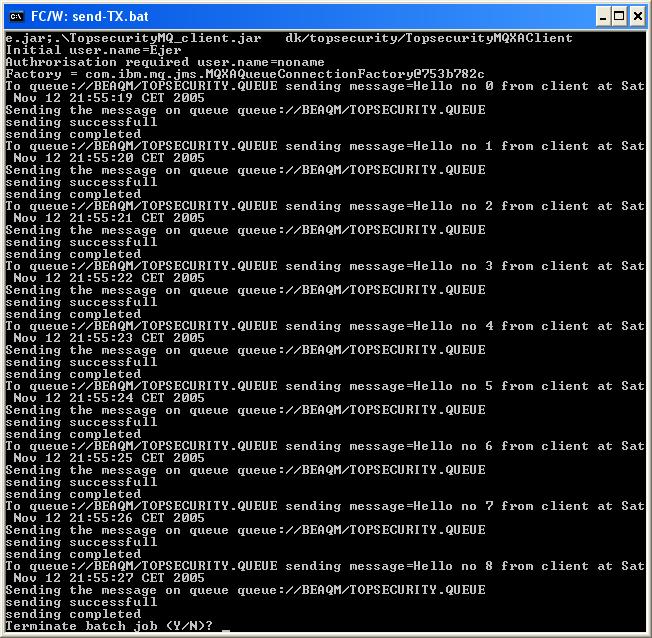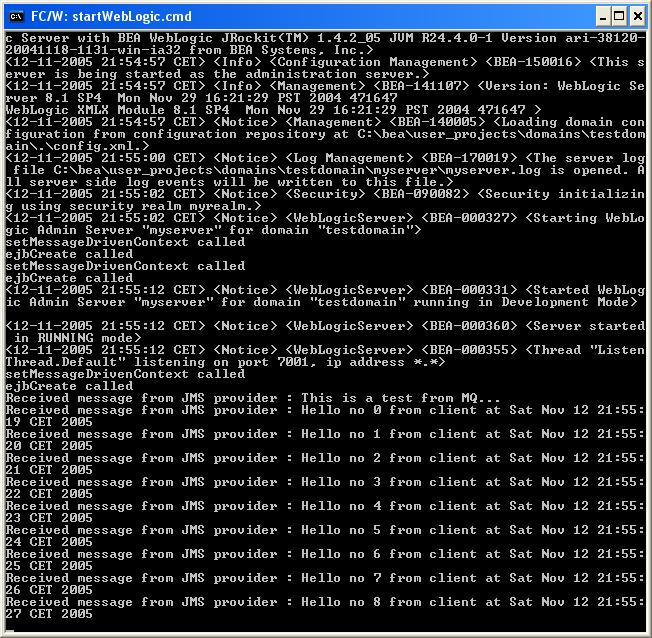package com.ibm.mq;
import com.ibm.mqservices.Trace;
import java.io.*;
import java.security.AccessController;
import java.security.PrivilegedAction;
import java.util.*;
import javax.resource.spi.ConnectionManager;
public class MQEnvironment {
...
static boolean getXaClientEnabled()
{
return xaClientEnabled;
}
...
static boolean xaClientEnabled = false;
...
static {
try {
Class.forName("com.ibm.mq.OSE");
...
}
catch(Exception exception) {
...
} } }
But you don't necessarily need them in the application server classpath - and that's what we'll be avoiding here.
MQ v5.2.1 MA88
25-07-2002 09:39 249.780 com.ibm.mq.jar
25-07-2002 09:39 39.267 com.ibm.mqbind.jar
25-07-2002 09:39 1.339.712 com.ibm.mqjms.jar
28-01-2002 09:29 17.978 connector.jar
28-01-2002 09:30 22.769 fscontext.jar
28-01-2002 09:30 77.116 providerutil.jar
MQ v5.3 CSD 11 (you need a login to access files)
01-03-2003 00:00 3.000 com.ibm.mqetclient.jar (required only if you want to interact transactionally)
02-08-2005 01:00 344.964 com.ibm.mq.jar
02-08-2005 01:00 41.816 com.ibm.mqbind.jar
02-08-2005 01:00 1.785.421 com.ibm.mqjms.jar
02-08-2005 01:00 17.978 connector.jar
02-08-2005 01:00 22.769 fscontext.jar
02-08-2005 01:00 77.116 providerutil.jar
MQ v6.0 (out-of-the box)
24-05-2005 01:00 3.363 com.ibm.mqetclient.jar (required only if you want to interact transactionally)
24-05-2005 02:00 421.771 com.ibm.mq.jar
24-05-2005 02:00 1.230.751 com.ibm.mqjms.jar
24-05-2005 02:00 2.099.749 dhbcore.jar
24-05-2005 02:00 22.769 fscontext.jar
24-05-2005 02:00 77.116 providerutil.jar
JMSAdmin.config... INITIAL_CONTEXT_FACTORY=com.sun.jndi.fscontext.RefFSContextFactory #INITIAL_CONTEXT_FACTORY=com.sun.jndi.ldap.LdapCtxFactory #INITIAL_CONTEXT_FACTORY=com.sun.jndi.fscontext.RefFSContextFactory #INITIAL_CONTEXT_FACTORY=com.ibm.ejs.ns.jndi.CNInitialContextFactory #INITIAL_CONTEXT_FACTORY=com.ibm.websphere.naming.WsnInitialContextFactory # # The following line specifies the URL of the service provider's initial # context. It currently refers to an LDAP root context. Examples of a # file system URL and WebSphere's JNDI namespace are also shown, commented # out. # PROVIDER_URL=file:/C:/jms-jndi-directory #PROVIDER_URL=ldap://localhost:389/ou=Groups,o=Airius.com #PROVIDER_URL=ldap://polaris/o=ibm,c=us #PROVIDER_URL=file:/C:/JNDI-Directory #PROVIDER_URL=iiop://localhost/ ... # # The following line specifies the security authentication model in use, # and may be 'none' (for anonymous authentication), 'simple', or 'CRAM_MD5'. # SECURITY_AUTHENTICATION=none ... #Leave out the following entries as they probably already are #PROVIDER_USERDN #PROVIDER_PASSWORD ... |
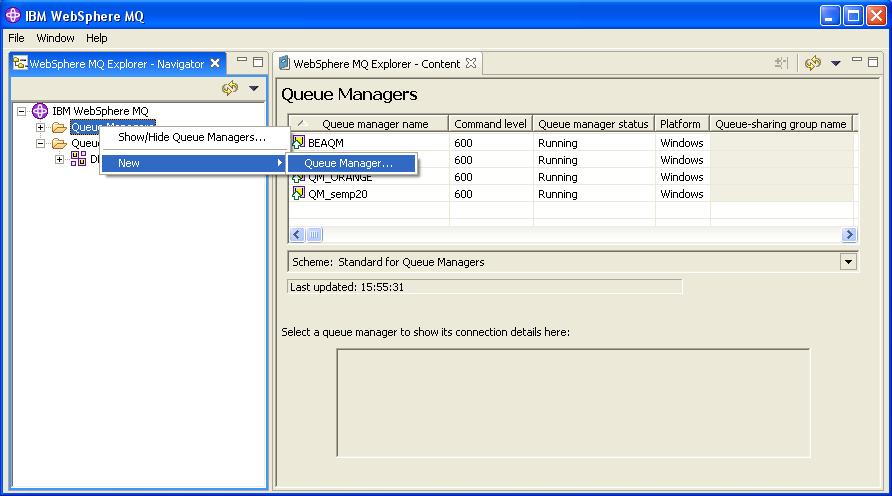
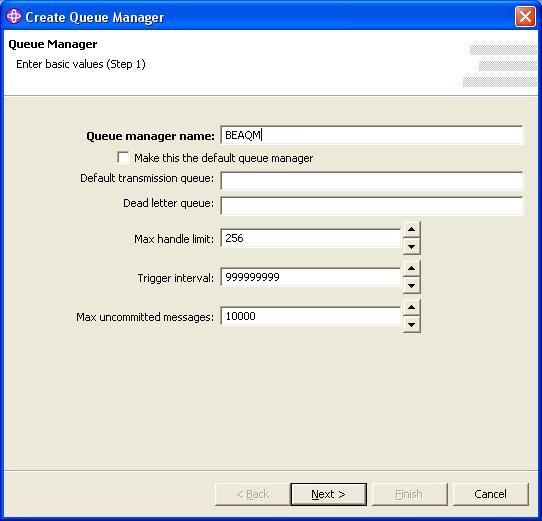
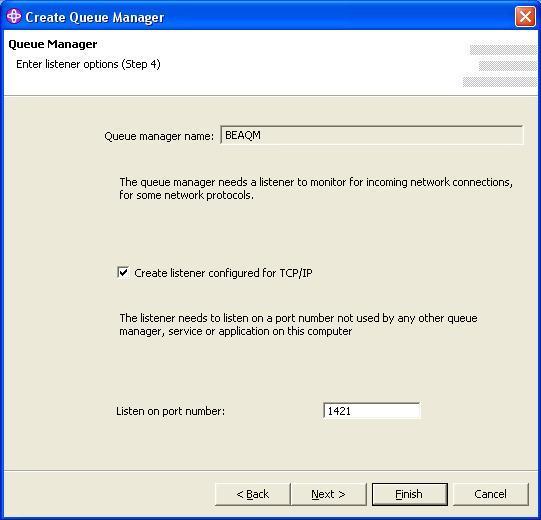
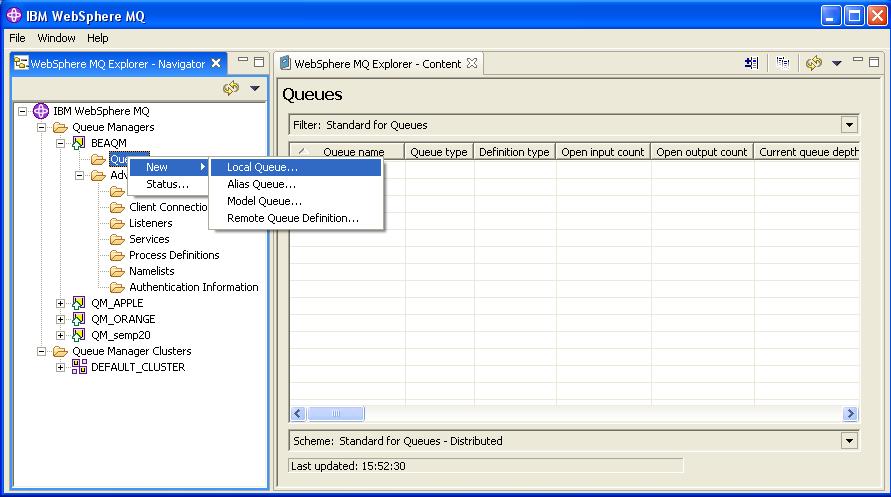
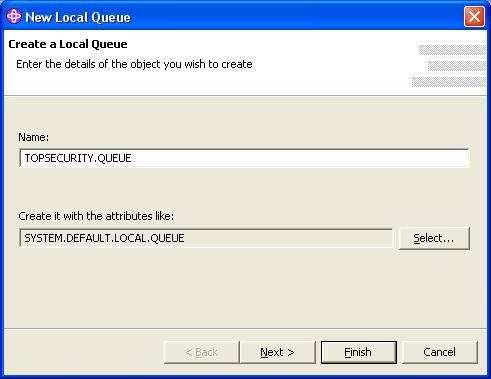
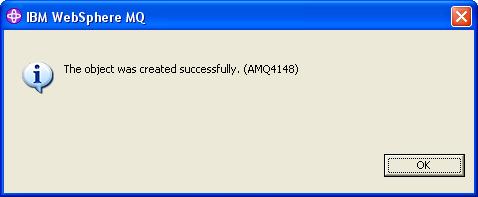
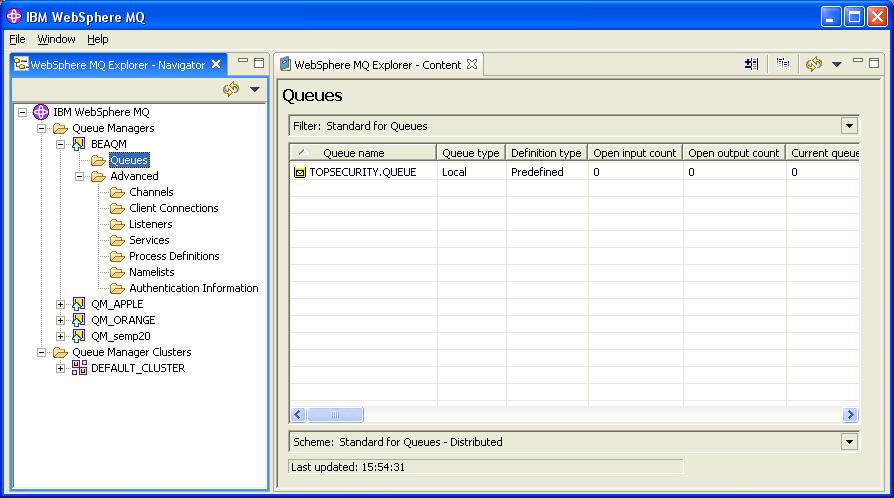
MQSC commandsdef xaqcf(TOPSECURITY_XAQCF) qmgr(BEAQM) channel(SYSTEM.DEF.SVRCONN) hostname(semp20) port(1421) transport(CLIENT) def q(TOPSECURITY_QUEUE) queue(TOPSECURITY.QUEUE) qmgr(BEAQM) |
TOPSECURITY_XAQCF/ClassName=com.ibm.mq.jms.MQXAQueueConnectionFactory TOPSECURITY_XAQCF/FactoryName=com.ibm.mq.jms.MQXAQueueConnectionFactoryFactoryWe're using the same queue manager for both non-transactional and transactional interaction. "hostname" is defined as "semp20" (2GHz sempron) and the queue manager operates from port 1421.
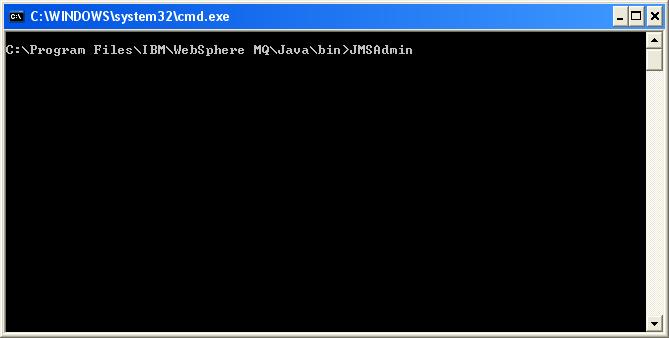
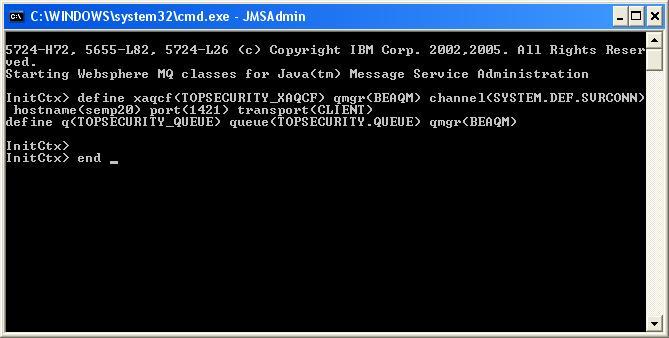
c:\jms-jndi-directory\.bindings#This file is used by the JNDI FSContext. #Sun Aug 14 16:56:00 CEST 2005 TOPSECURITY_QUEUE/ClassName=com.ibm.mq.jms.MQQueue TOPSECURITY_QUEUE/FactoryName=com.ibm.mq.jms.MQQueueFactory TOPSECURITY_QUEUE/RefAddr/0/Content=6 TOPSECURITY_QUEUE/RefAddr/0/Encoding=String TOPSECURITY_QUEUE/RefAddr/0/Type=VER TOPSECURITY_QUEUE/RefAddr/1/Content=-2 TOPSECURITY_QUEUE/RefAddr/1/Encoding=String TOPSECURITY_QUEUE/RefAddr/1/Type=EXP TOPSECURITY_QUEUE/RefAddr/2/Content=-2 TOPSECURITY_QUEUE/RefAddr/2/Encoding=String TOPSECURITY_QUEUE/RefAddr/2/Type=PRI TOPSECURITY_QUEUE/RefAddr/3/Content=-2 TOPSECURITY_QUEUE/RefAddr/3/Encoding=String TOPSECURITY_QUEUE/RefAddr/3/Type=PER TOPSECURITY_QUEUE/RefAddr/4/Content=1208 TOPSECURITY_QUEUE/RefAddr/4/Encoding=String TOPSECURITY_QUEUE/RefAddr/4/Type=CCS TOPSECURITY_QUEUE/RefAddr/5/Content=0 TOPSECURITY_QUEUE/RefAddr/5/Encoding=String TOPSECURITY_QUEUE/RefAddr/5/Type=TC TOPSECURITY_QUEUE/RefAddr/6/Content=273 TOPSECURITY_QUEUE/RefAddr/6/Encoding=String TOPSECURITY_QUEUE/RefAddr/6/Type=ENC TOPSECURITY_QUEUE/RefAddr/7/Content=1 TOPSECURITY_QUEUE/RefAddr/7/Encoding=String TOPSECURITY_QUEUE/RefAddr/7/Type=FIQ TOPSECURITY_QUEUE/RefAddr/8/Content=TOPSECURITY.QUEUE TOPSECURITY_QUEUE/RefAddr/8/Encoding=String TOPSECURITY_QUEUE/RefAddr/8/Type=QU TOPSECURITY_QUEUE/RefAddr/9/Content=BEAQM TOPSECURITY_QUEUE/RefAddr/9/Encoding=String TOPSECURITY_QUEUE/RefAddr/9/Type=QMGR TOPSECURITY_XAQCF/ClassName=com.ibm.mq.jms.MQXAQueueConnectionFactory TOPSECURITY_XAQCF/FactoryName=com.ibm.mq.jms.MQXAQueueConnectionFactoryFactory TOPSECURITY_XAQCF/RefAddr/0/Content=6 TOPSECURITY_XAQCF/RefAddr/0/Encoding=String TOPSECURITY_XAQCF/RefAddr/0/Type=VER TOPSECURITY_XAQCF/RefAddr/1/Content=1 TOPSECURITY_XAQCF/RefAddr/1/Encoding=String TOPSECURITY_XAQCF/RefAddr/1/Type=TRAN TOPSECURITY_XAQCF/RefAddr/10/Content=false TOPSECURITY_XAQCF/RefAddr/10/Encoding=String TOPSECURITY_XAQCF/RefAddr/10/Type=SFIPS TOPSECURITY_XAQCF/RefAddr/11/Content=false TOPSECURITY_XAQCF/RefAddr/11/Encoding=String TOPSECURITY_XAQCF/RefAddr/11/Type=SPAG TOPSECURITY_XAQCF/RefAddr/12/Content=true TOPSECURITY_XAQCF/RefAddr/12/Encoding=String TOPSECURITY_XAQCF/RefAddr/12/Type=UCP TOPSECURITY_XAQCF/RefAddr/13/Content=5000 TOPSECURITY_XAQCF/RefAddr/13/Encoding=String TOPSECURITY_XAQCF/RefAddr/13/Type=PINT TOPSECURITY_XAQCF/RefAddr/14/Content=10 TOPSECURITY_XAQCF/RefAddr/14/Encoding=String TOPSECURITY_XAQCF/RefAddr/14/Type=MBS TOPSECURITY_XAQCF/RefAddr/15/Content=1 TOPSECURITY_XAQCF/RefAddr/15/Encoding=String TOPSECURITY_XAQCF/RefAddr/15/Type=FIQ TOPSECURITY_XAQCF/RefAddr/16/Content= TOPSECURITY_XAQCF/RefAddr/16/Encoding=String TOPSECURITY_XAQCF/RefAddr/16/Type=LA TOPSECURITY_XAQCF/RefAddr/17/Content=5000 TOPSECURITY_XAQCF/RefAddr/17/Encoding=String TOPSECURITY_XAQCF/RefAddr/17/Type=RINT TOPSECURITY_XAQCF/RefAddr/18/Content=true TOPSECURITY_XAQCF/RefAddr/18/Encoding=String TOPSECURITY_XAQCF/RefAddr/18/Type=TCM TOPSECURITY_XAQCF/RefAddr/19/Content=SYSTEM.DEFAULT.MODEL.QUEUE TOPSECURITY_XAQCF/RefAddr/19/Encoding=String TOPSECURITY_XAQCF/RefAddr/19/Type=TM TOPSECURITY_XAQCF/RefAddr/2/Content=BEAQM TOPSECURITY_XAQCF/RefAddr/2/Encoding=String TOPSECURITY_XAQCF/RefAddr/2/Type=QMGR TOPSECURITY_XAQCF/RefAddr/20/Content= TOPSECURITY_XAQCF/RefAddr/20/Encoding=String TOPSECURITY_XAQCF/RefAddr/20/Type=TQPFX TOPSECURITY_XAQCF/RefAddr/21/Content=1 TOPSECURITY_XAQCF/RefAddr/21/Encoding=String TOPSECURITY_XAQCF/RefAddr/21/Type=MRET TOPSECURITY_XAQCF/RefAddr/3/Content=semp20 TOPSECURITY_XAQCF/RefAddr/3/Encoding=String TOPSECURITY_XAQCF/RefAddr/3/Type=HOST TOPSECURITY_XAQCF/RefAddr/4/Content=1421 TOPSECURITY_XAQCF/RefAddr/4/Encoding=String TOPSECURITY_XAQCF/RefAddr/4/Type=PORT TOPSECURITY_XAQCF/RefAddr/5/Content=SYSTEM.DEF.SVRCONN TOPSECURITY_XAQCF/RefAddr/5/Encoding=String TOPSECURITY_XAQCF/RefAddr/5/Type=CHAN TOPSECURITY_XAQCF/RefAddr/6/Content=819 TOPSECURITY_XAQCF/RefAddr/6/Encoding=String TOPSECURITY_XAQCF/RefAddr/6/Type=CCS TOPSECURITY_XAQCF/RefAddr/7/Content=\u0000\u0000\u0000\u0000\u0000\u0000\u0000\u0000\u0000\u0000\u0000\u0000\u0000\u0000\u0000\u0000\u0000\u0000\u0000\u0000\u0000\u0000\u0000\u0000\u0000\u0000\u0000\u0000\u0000\u0000\u0000\u0000\u0000\u0000\u0000\u0000\u0000\u0000\u0000\u0000\u0000\u0000\u0000\u0000\u0000\u0000\u0000\u0000\u0000\u0000\u0000\u0000\u0000\u0000\u0000\u0000\u0000\u0000\u0000\u0000\u0000\u0000\u0000\u0000\u0000\u0000\u0000\u0000\u0000\u0000\u0000\u0000\u0000\u0000\u0000\u0000\u0000\u0000\u0000\u0000\u0000\u0000\u0000\u0000\u0000\u0000\u0000\u0000\u0000\u0000\u0000\u0000\u0000\u0000\u0000\u0000\u0000\u0000\u0000\u0000\u0000\u0000\u0000\u0000\u0000\u0000\u0000\u0000\u0000\u0000\u0000\u0000\u0000\u0000\u0000\u0000\u0000\u0000\u0000\u0000\u0000\u0000\u0000\u0000\u0000\u0000\u0000\u0000 TOPSECURITY_XAQCF/RefAddr/7/Encoding=String TOPSECURITY_XAQCF/RefAddr/7/Type=CT TOPSECURITY_XAQCF/RefAddr/8/Content=0 TOPSECURITY_XAQCF/RefAddr/8/Encoding=String TOPSECURITY_XAQCF/RefAddr/8/Type=CTO TOPSECURITY_XAQCF/RefAddr/9/Content=0 TOPSECURITY_XAQCF/RefAddr/9/Encoding=String TOPSECURITY_XAQCF/RefAddr/9/Type=SRC |
TopsecurityMDB.java |
ejb-jar.xml |
weblogic-ejb-jar.xml |
config.xml |
TopsecurityMQXAClient.java |
|
|
build.xml |
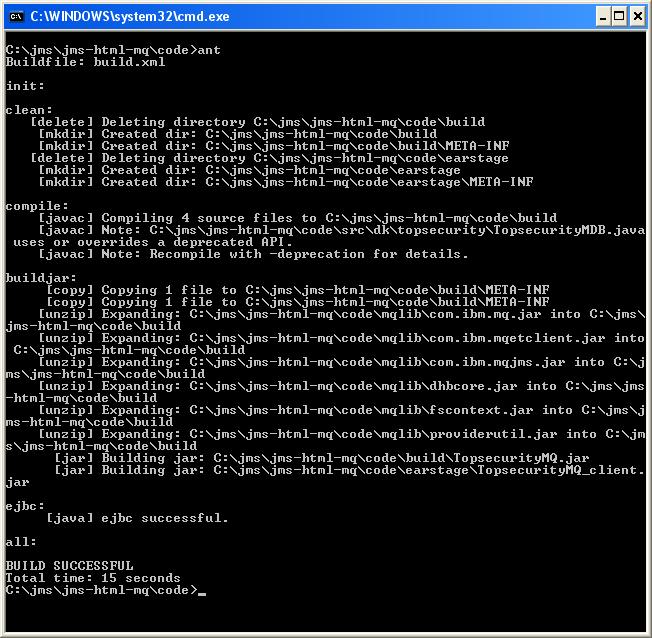

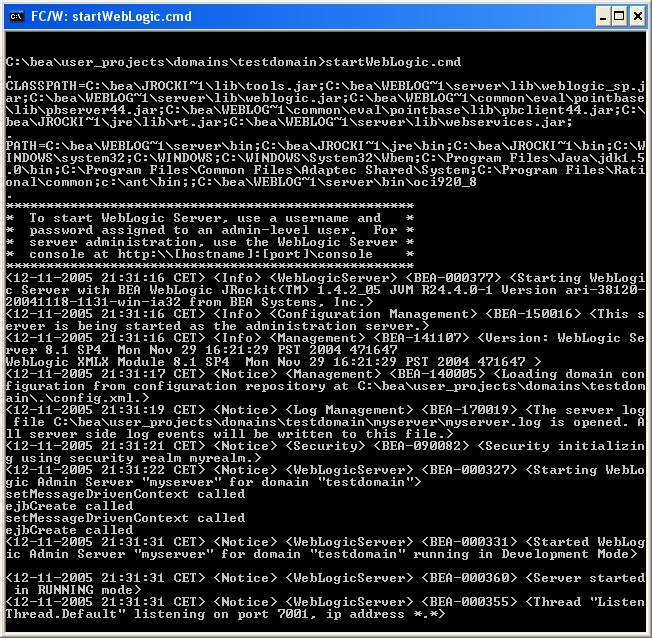
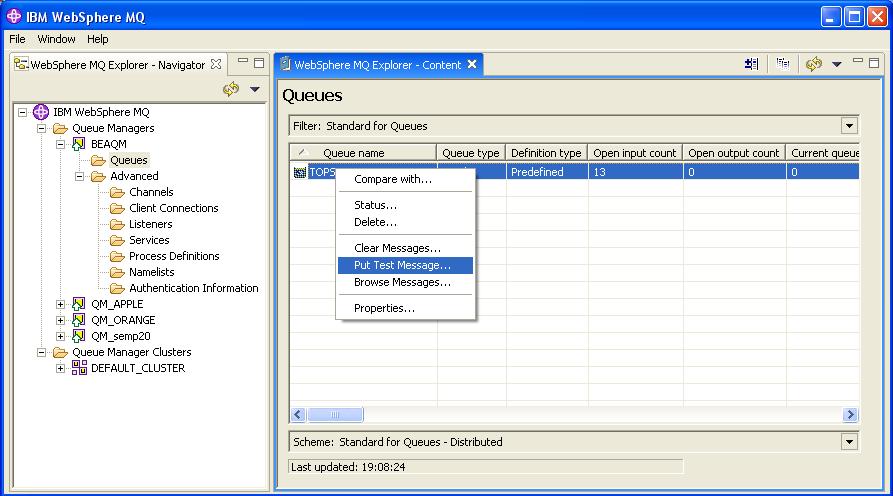
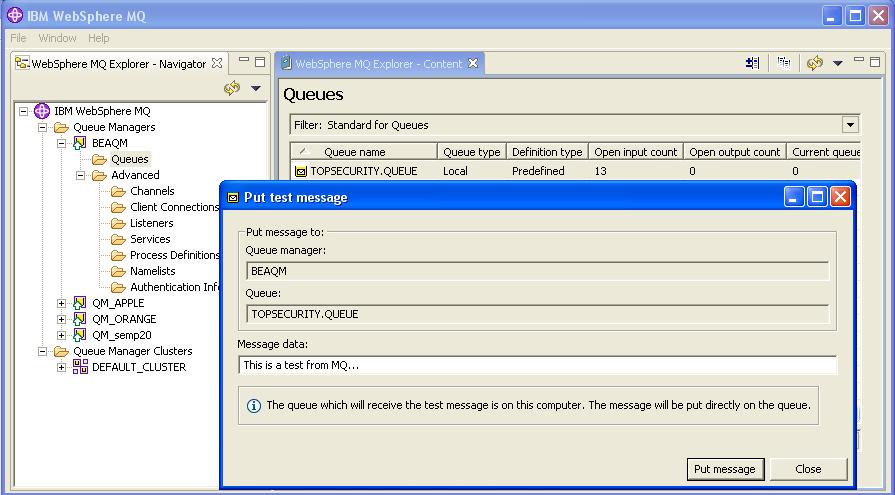
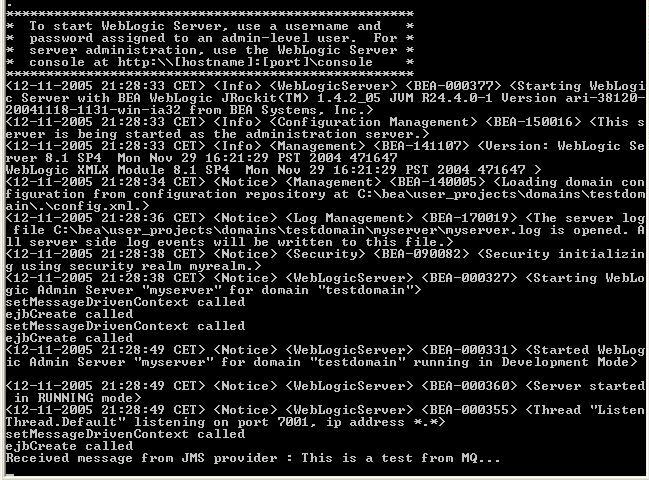
send-tx.cmdset BEA_HOME=C:\bea set WL_HOME=C:\bea\weblogic81 java -classpath .;.\earstage\TopsecurityMQ_client.jar;.\mqlib\weblogic.jar;.\mqlib\com.ibm.mqetclient.jar;.\mqlib\com.ibm.mq.jar;.\mqlib\com.ibm.mqjms.jar;.\mqlib\fscontext.jar;.\mqlib\providerutil.jar;.\mqlib\dbhcore.jar;.\TopsecurityMQ_client.jar dk/topsecurity/TopsecurityMQXAClient |
